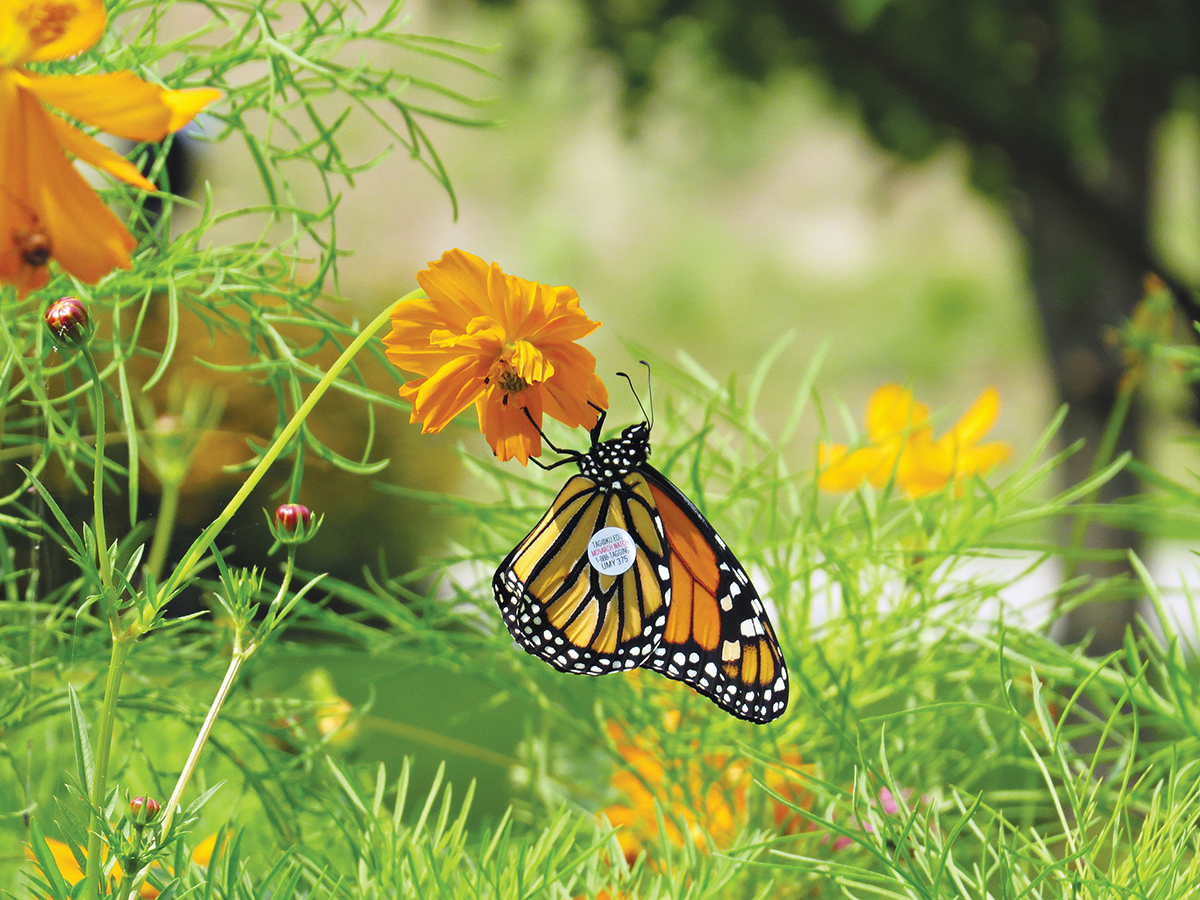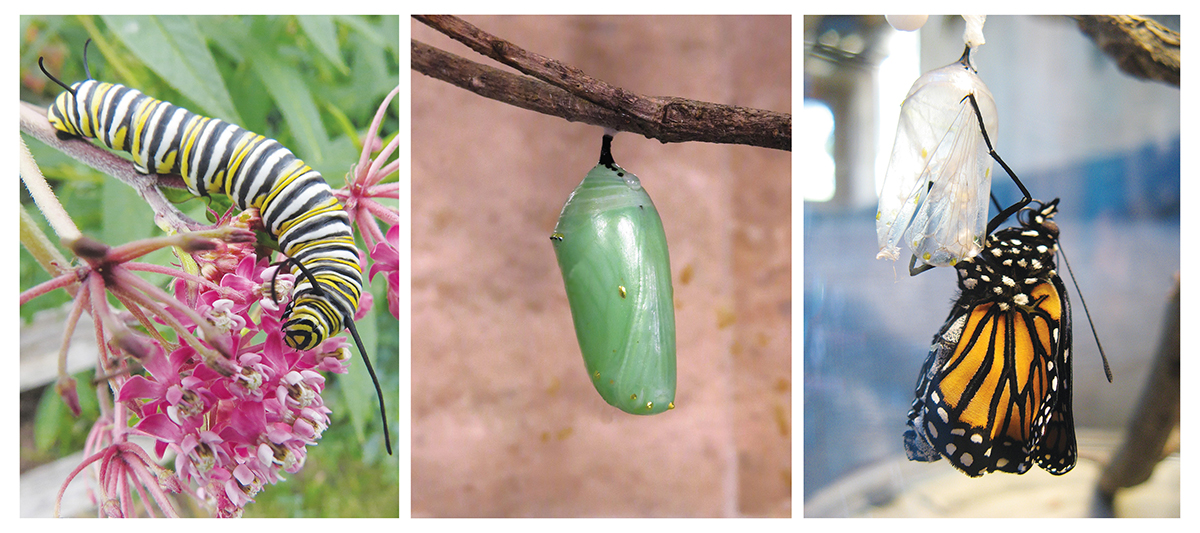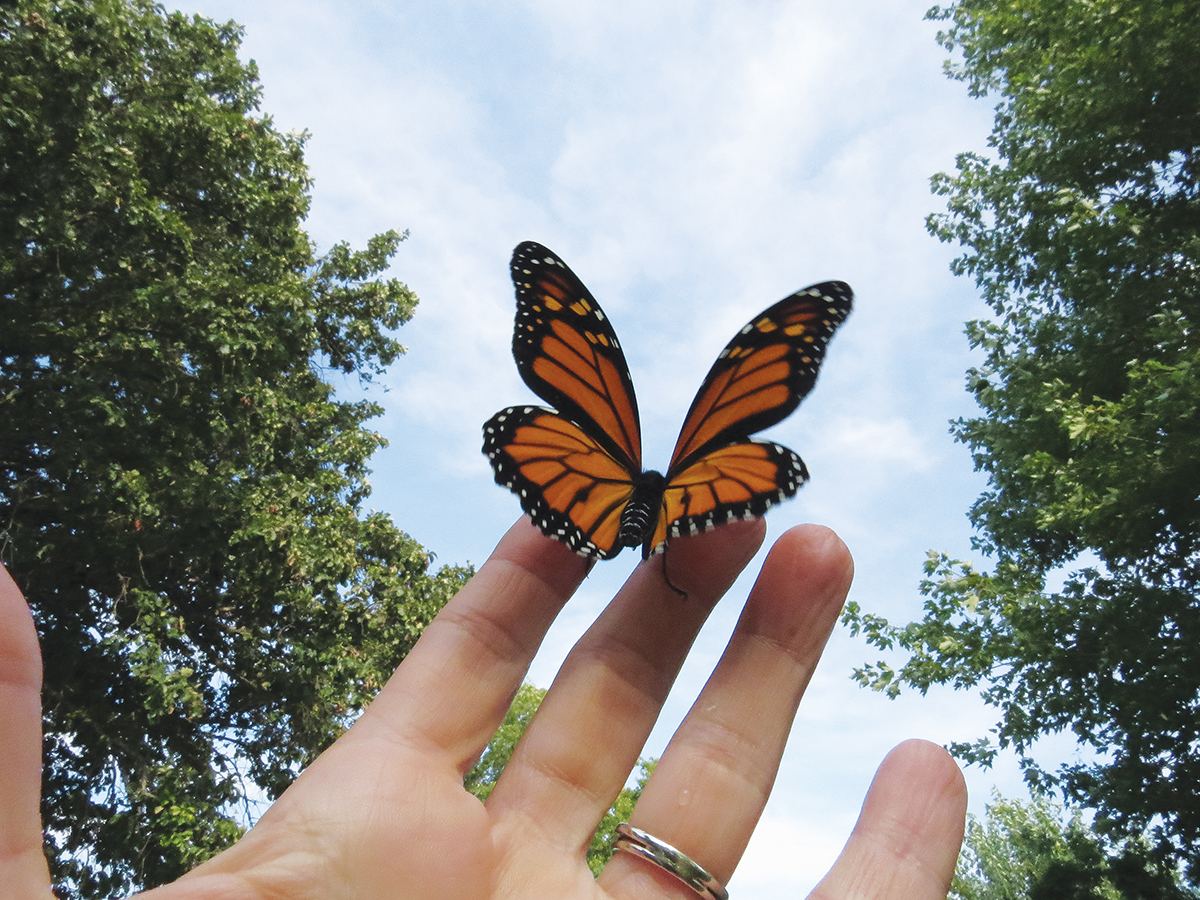
Tagged Monarch – all photos by Kylee Baumle
It’s happening now – the great monarch butterfly migration north from their warm winter homes as far south as Mexico City. The skies over North America are filled with spectacular orange and black clouds of monarchs, winging their way to their far-flung breeding grounds. The National Wildlife Federation calls it “one of the greatest natural phenomena in the insect world.” If you’ve ever witnessed one, you never forget it. Just last week, the leading edge of the eastern branch of the migration was moving across central Iowa, Illinois, Indiana, and northwestern Pennsylvania. By the time you read this, the monarchs will be touching down in many more states.

Not long ago, monarchs numbered in the billions, but in the last 20 years their population has dropped by 90% – primarily through loss of habitat. Monarchs can’t survive without milkweed. It’s as simple as that. They lay their eggs on milkweed and their caterpillars eat only milkweed. It’s all about the milkweed. The good news is that a growing number of citizen scientists, students and gardeners are welcoming the monarchs to their gardens and communities by planting milkweed and creating monarch way stations.
If you’d like to know more about this iconic butterfly, and see it in your own garden for years to come, I highly recommend Kylie Baumle’s gorgeous, informative book, The Monarch: Saving Our Most-Loved Butterfly. I keep my copy on my coffee table; it’s that beautiful. (All photos copyright Kylee Baumle from her book The Monarch: Saving Our Most-Loved Butterfly.)

Be the first to leave a comment on this article!
Leave a Reply